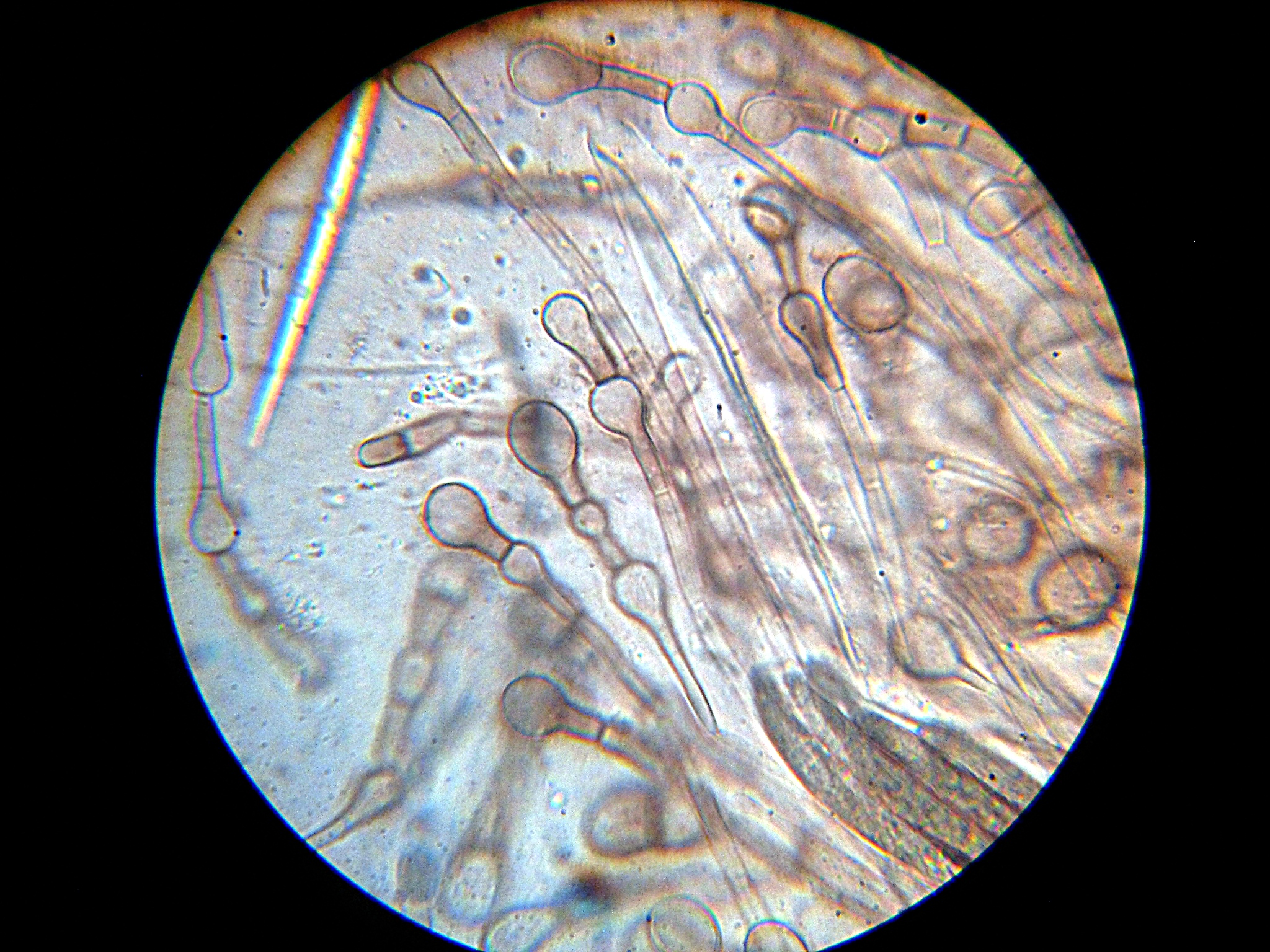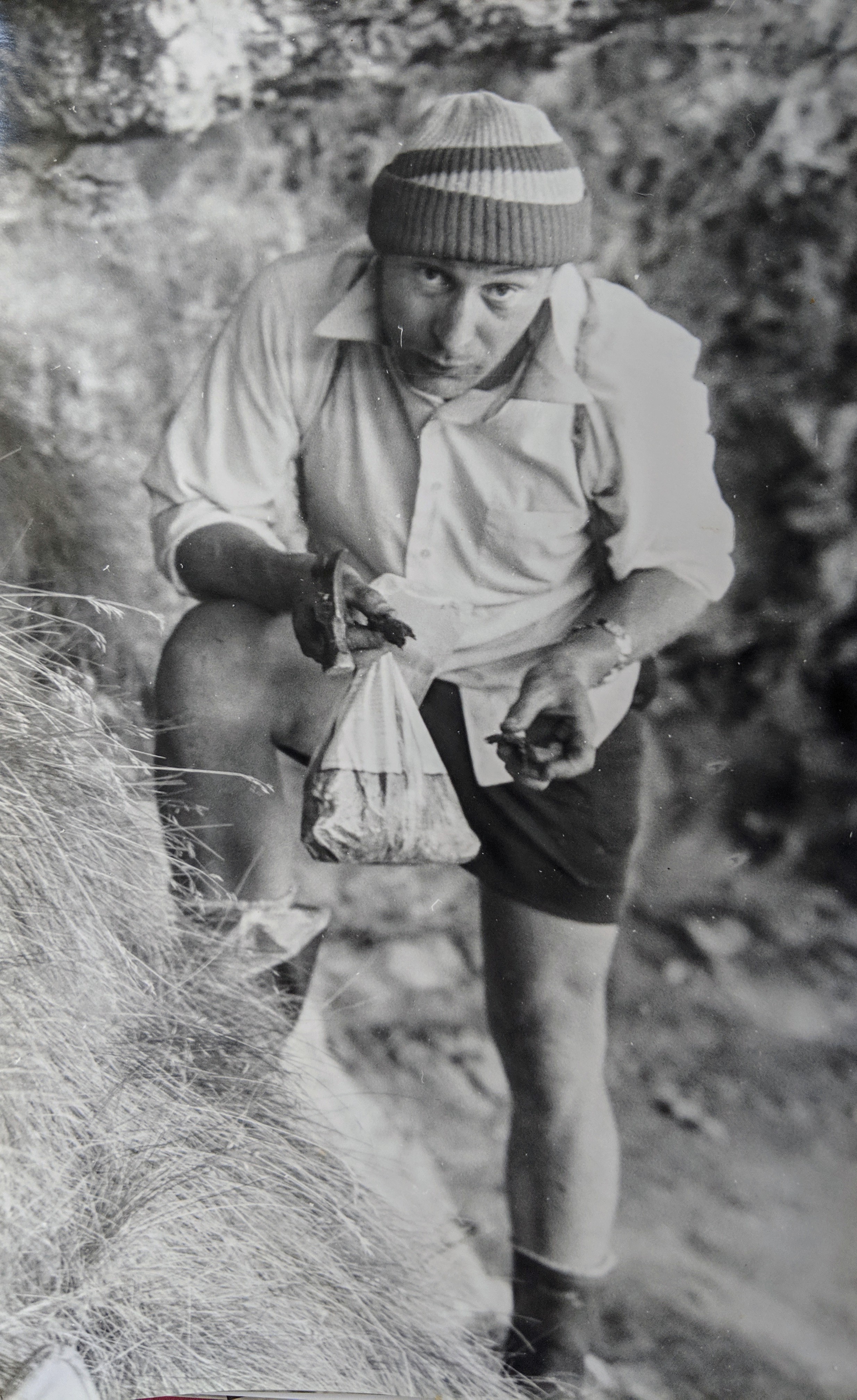|
Caloplaca Bartlettii
''Caloplaca bartlettii'' is a species of saxicolous (rock-dwelling), crustose lichen in the family Teloschistaceae. It is found in Tasmania and New Zealand, where it grows on coastal rock outcrops. Taxonomy The lichen was formally described as a new species in 2009 by lichenologists Sergey Kondratyuk and Ingvar Kärnefelt. The type specimen was collected from Kapowairua, a locality at the eastern end of Spirits Bay (North Island The North Island, also officially named Te Ika-a-Māui, is one of the two main islands of New Zealand, separated from the larger but much less populous South Island by the Cook Strait. The island's area is , making it the world's 14th-largest ...), where it was found growing on coastal rocks above sea level. The species epithet honours New Zealand botanist John Bartlett, who collected the type species in 1984. Description The crustose, thallus is wide (although neighbouring lichens will often coalesce to form larger patches), with a greenish- ... [...More Info...] [...Related Items...] OR: [Wikipedia] [Google] [Baidu] |
Ingvar Kärnefelt
Jan Eric Ingvar Kärnefelt (born 1944) is a Swedish lichenologist. Early life and education Kärnefelt was born in Gothenburg, Sweden in 1944. His initial goal in his higher-level studies at University of Cologne in 1966–1967 was to become a dentist. He changed courses in 1968, turning instead to biology at the University of Gothenburg in 1968. Gunnar Degelius, his first teacher during undergraduate studies in botany in 1968, inspired him and others. After Degelius' retirement in 1969, Ingvar continued his studies at Lund University, where Hans Runemark held a position in systematic botany. In 1971 he met Ove Almborn, who became his supervisor. In 1979, he defended his thesis titled "The brown fruticose species of ''Cetraria''". The thesis was later awarded a prize for the best doctoral dissertation in botany at Lund University during a 5-year period by the Royal Physiographic Society in Lund. Career Kärnefelt became associate professor at the Department of Systematic Bo ... [...More Info...] [...Related Items...] OR: [Wikipedia] [Google] [Baidu] |
Thallus
Thallus (plural: thalli), from Latinized Greek (), meaning "a green shoot" or "twig", is the vegetative tissue of some organisms in diverse groups such as algae, fungi, some liverworts, lichens, and the Myxogastria. Many of these organisms were previously known as the thallophytes, a polyphyletic group of distantly related organisms. An organism or structure resembling a thallus is called thalloid, thallodal, thalliform, thalline, or thallose. A thallus usually names the entire body of a multicellular non-moving organism in which there is no organization of the tissues into organs. Even though thalli do not have organized and distinct parts (leaves, roots, and stems) as do the vascular plants, they may have analogous structures that resemble their vascular "equivalents". The analogous structures have similar function or macroscopic structure, but different microscopic structure; for example, no thallus has vascular tissue. In exceptional cases such as the Lemnoideae, where ... [...More Info...] [...Related Items...] OR: [Wikipedia] [Google] [Baidu] |
Lichens Of New Zealand
A lichen ( , ) is a composite organism that arises from algae or cyanobacteria living among hypha, filaments of multiple fungus, fungi species in a mutualism (biology), mutualistic relationship.Introduction to Lichens – An Alliance between Kingdoms . University of California Museum of Paleontology. Lichens have properties different from those of their component organisms. They come in many colors, sizes, and forms and are sometimes plant-like, but are not plants. They may have tiny, leafless branches (fruticose); flat leaf-like structures (foliose); grow crust-like, adhering tightly to a surface (substrate) like a thick coat of paint (crustose); have a powder-like appearance (Leprose lichen, leprose); or other growth forms. A ... [...More Info...] [...Related Items...] OR: [Wikipedia] [Google] [Baidu] |
Lichens Of Australia
A lichen ( , ) is a composite organism that arises from algae or cyanobacteria living among filaments of multiple fungi species in a mutualistic relationship.Introduction to Lichens – An Alliance between Kingdoms . University of California Museum of Paleontology. Lichens have properties different from those of their component organisms. They come in many colors, sizes, and forms and are sometimes plant-like, but are not s. They may have tiny, leafless branches (); flat leaf-like structures ( |
Lichens Described In 2009
A lichen ( , ) is a composite organism that arises from algae or cyanobacteria living among filaments of multiple fungi species in a mutualistic relationship.Introduction to Lichens – An Alliance between Kingdoms . University of California Museum of Paleontology. Lichens have properties different from those of their component organisms. They come in many colors, sizes, and forms and are sometimes plant-like, but are not s. They may have tiny, leafless branches (); flat leaf-like structures ( |
Lichen Species
A lichen ( , ) is a composite organism that arises from algae or cyanobacteria living among filaments of multiple fungi species in a mutualistic relationship.Introduction to Lichens – An Alliance between Kingdoms . University of California Museum of Paleontology. Lichens have properties different from those of their component organisms. They come in many colors, sizes, and forms and are sometimes plant-like, but are not s. They may have tiny, leafless branches (); flat leaf-like structures ( |
Caloplaca
''Caloplaca'' is a lichen genus comprising a number of distinct species. Members of the genus are commonly called firedot lichen, jewel lichen.Field Guide to California Lichens, Stephen Sharnoff, Yale University Press, 2014, gold lichens, "orange lichens", but they are not always orange, as in the case of '' C. albovariegata''. The distribution of this lichen genus is worldwide, extending from Antarctica to the high Arctic. It includes a portion of northern North America and the Russian High Arctic. There are about thirty species of ''Caloplaca'' in the flora of the British Isles. An example species in this genus is ''Caloplaca saxicola'', a lichen with worldwide distribution including the Antarctic continent, Europe and northern North America including the northern reaches of the Canadian boreal forests. A new species of ''Caloplaca'', '' C. obamae'', the first species to be named in honor of Barack Obama, was discovered in 2007 on Santa Rosa Island in California and p ... [...More Info...] [...Related Items...] OR: [Wikipedia] [Google] [Baidu] |
List Of Caloplaca Species
This is a list of species in the lichen genus '' Caloplaca''. Although there were estimated to be more than 500 species in 2008, the family Teloschistaceae has undergone major revisions since then. Several molecular phylogenetic studies have been published that have established a phylogenetic framework to more appropriately classify lichens that were previously grouped in ''Caloplaca''. , Species Fungorum accepts 202 species of ''Caloplaca''. A *'' Caloplaca abbreviata'' *'' Caloplaca abuensis'' *'' Caloplaca adnexa'' *'' Caloplaca agrata'' *'' Caloplaca ahtii'' *'' Caloplaca akbarica'' *'' Caloplaca albopruinosa'' *'' Caloplaca albovariegata'' *'' Caloplaca alcarum'' *'' Caloplaca aliciae'' *'' Caloplaca allanii'' *'' Caloplaca almbornii'' *'' Caloplaca amsterdamensis'' *'' Caloplaca anularis'' *'' Caloplaca arandensis'' *'' Caloplaca archeri'' *'' Caloplaca areolata'' *'' Caloplaca aseptatospora'' *'' Caloplaca astonii'' *'' Caloplaca atroalba'' *'' Calop ... [...More Info...] [...Related Items...] OR: [Wikipedia] [Google] [Baidu] |
Lichen Product
Lichen products, also known as lichen substances, are organic compounds produced by a lichen. Specifically, they are secondary metabolites. Lichen products are represented in several different chemical classes, including terpenoids, orcinol derivatives, chromones, xanthones, depsides, and depsidones. Over 800 lichen products of known chemical structure have been reported in the scientific literature, and most of these compound are exclusively found in lichens. Examples of lichen products include usnic acid (a dibenzofuran), atranorin (a depside), lichexanthone (a xanthone), salazinic acid (a depsidone), and isolichenan, an α-glucan. Many lichen products have biological activity, and research into these effects is ongoing. Lichen products accumulate on the outer walls of the fungal hyphae, and are quite stable. Crystal deposits can be visualised using scanning electron microscopy. For this reason, even very old herbarium specimens can be analysed. The amount of lichen products i ... [...More Info...] [...Related Items...] OR: [Wikipedia] [Google] [Baidu] |
Parietin
Parietin is the predominant cortical pigment of lichens in the genus '' Caloplaca'', a secondary product of the lichen ''Xanthoria parietina'', and a pigment found in the roots of Curled Dock (''Rumex crispus''). It has an orangy-yellow color and absorbs blue light. It is also known as physcion. It has also been shown to protect lichens against UV-B light, at high altitudes in Alpine regions. The UV-B light stimulates production of parietin and the parietin protects the lichens from damage. Lichens in arctic regions such as Svarlbard retain this capability though they do not encounter damaging levels of UV-B, a capability that could help protect the lichens in case of Ozone layer thinning. It has also shown anti-fungal activity against barley powdery mildew and cucumber powdery mildew, more efficiently in the latter case than treatments with fenarimol and polyoxin B. It reacts with KOH to form a deep, reddish-magenta compound. Effect on human cancer cells Also found in rhu ... [...More Info...] [...Related Items...] OR: [Wikipedia] [Google] [Baidu] |
Paraphyses
Paraphyses are erect sterile filament-like support structures occurring among the reproductive apparatuses of fungi, ferns, bryophytes and some thallophytes. The singular form of the word is paraphysis. In certain fungi, they are part of the fertile spore-bearing layer. More specifically, paraphyses are sterile filamentous hyphal end cells composing part of the hymenium of Ascomycota and Basidiomycota interspersed among either the asci or basidia respectively, and not sufficiently differentiated to be called cystidia A cystidium (plural cystidia) is a relatively large cell found on the sporocarp of a basidiomycete (for example, on the surface of a mushroom gill), often between clusters of basidia. Since cystidia have highly varied and distinct shapes that ar ..., which are specialized, swollen, often protruding cells. The tips of paraphyses may contain the pigments which colour the hymenium. In ferns and mosses, they are filament-like structures that are found on sporangia ... [...More Info...] [...Related Items...] OR: [Wikipedia] [Google] [Baidu] |
John Bartlett (botanist)
John Kenneth Bartlett (7 December 1945 – 1 May 1986) was a New Zealand plant collector and botanist who specialised in mosses, liverworts, and lichens. In 1974, he found Metrosideros_bartlettii, Bartlett's rātā growing south-east of Cape Reinga. Biography Bartlett was born in Hamilton, New Zealand, on 7 December 1945, and was an only child. He attended the Marist Brothers school (now St John's College, Hamilton, St John's College) in Hamilton, New Zealand, Hamilton, where he became Dux (education), Dux. He studied mathematics at University_of_Auckland, Auckland University, the University of Queensland in Brisbane, and finally University_of_Sydney, Sydney University, where he gained his Master's degree. On his return to New Zealand, Bartlett worked as a teacher at Auckland Grammar School and at Sacred_Heart_College,_Auckland, Sacred Heart College where, at his death on 1 May 1986, he was Head of Science. Plant collecting Bartlett was an enthusiastic plant collector, who s ... [...More Info...] [...Related Items...] OR: [Wikipedia] [Google] [Baidu] |



.jpg)

